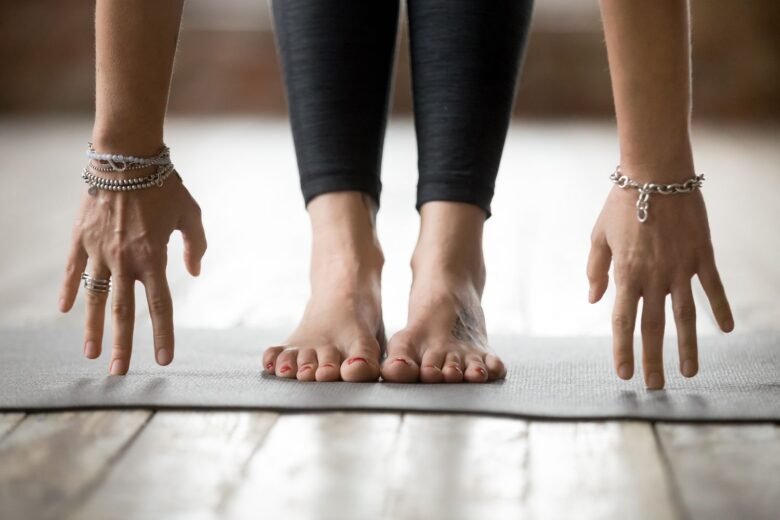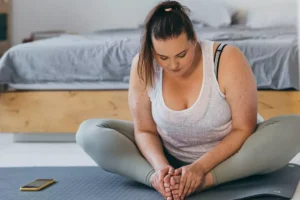Exercise to increase flexibility. Consistency is the key to seeing results. Flexibility refers to the temporary lengthening or stretching of a muscle. Reaching to touch your toes or picking up a glass off a table requires flexibility; factors affecting this include age, gender, and health conditions.
1. Ankle Circles
Personal trainers typically emphasize strength training and fat loss; however, mobility improvement is equally essential to overall health. Ankle stiffness is a common complaint that can hinder walking, running, and sports participation; however, several exercises can help increase ankle flexibility to reduce the risk of injury and improve flexibility.
An ankle circle is an easy exercise to incorporate. From either sitting on a chair or the floor, place a rolled towel under your ankle and slowly rotate it in circles; do 10 clockwise circles, switch direction, and repeat 10 more clockwise circles before doing another set of 10. For added intensity, you could try writing letters of the alphabet with your big toe!
Foot flexes are another useful ankle mobility exercise, and one way of performing them is with a band around your foot and pulling its ends toward you to point your toes. Do this three sets of 10 on each leg three days a week – this strengthens both ankle and calf muscles for plantar flexion (pointing down your toes) and dorsiflexion (pulling back your toes toward yourself).
2. Wrist Stretch
Wrist stretches are important because they help your wrist joints move through their normal range of motion and alleviate muscle tightness, says Giordano. Without proper flexibility in the wrists and fingers, problems such as opening doors and picking up cups could arise; otherwise, stretching could help.
Simply get into a tabletop position on either a floor or desk and lay both palms flat with shoulders directly over wrist joints. Now slowly rotate both hands in clockwise circles until each centimeter of the circle has been felt; do this eight-10 times.
Another excellent wrist mobility stretch involves placing both hands together with elbows close to your body and then making fists. Use one hand to slowly pull one hand downward until tension builds in wrist and forearm muscles and hold for 30 seconds before relaxing back into starting position. These simple exercises can make an incredible difference in flexibility as well as help you enjoy activities without pain or discomfort.
3. Neck Rotations
Neck rotations are one of the best exercises to strengthen neck rotator muscles, helping reduce pain and tightness while increasing mobility in your neck.
Assuming your back is straight and shoulders relaxed, gradually turn your head to the left as far as possible without increasing neck pain. Hold this position for 10-15 seconds before repeating on the other side. This exercise stretches the neck muscles that connect with your ribs. Doing this regularly is key for keeping the sternocleidomastoid (SCM) muscle healthy and flexible.
4. Hip Flexor Stretch
Many individuals who suffer from hip pain have tight hip flexors. This is usually the result of spending their workday sitting (which shortens these muscles), driving home seated, eating seated meals and watching television while sitting, watching television while still sitting, watching television while sitting while curled up in bed sitting – reducing hip tension through core, hip, and knee loading exercises will strengthen and balance these muscles to reduce tension in their hips and reduce tension at bedtime.
Hip flexor muscles are the group of muscles located along the front of your upper thigh that run along the iliacus, pectineus, psoas major, and rectus femoris muscles and are used when you flex your hips, such as during high knees exercise, soccer ball kick, or walking or running. These are used when performing actions such as high knee exercises, kicking a soccer ball, or walking/running. To stretch your hip flexors, lie on your back with one knee bent so it is parallel with the floor and slowly and gently pull on its foot with your hand until a stretch is felt in your front hip. Your abdominal muscles will step in to support and help ensure a neutral spine during this stretch.
5. Thoracic Spine Rotation
The thoracic spine (commonly referred to as the upper back) plays an essential role in connecting our upper and lower bodies, keeping all movements seamless while also preventing tightness in the shoulder, neck, and lower back areas. Stiffness in this region may result from factors like sitting for long periods, using tech devices excessively, or participating in certain sports or activities that put a strain on this segment of the spine.
Physiotherapists can assist patients suffering from stiffness by performing manual techniques, targeted flexibility exercises like the quadruped thoracic rotation, and improving strength and mobility with targeted strengthening exercises like the quadruped thoracic rotation. This straightforward exercise has proven itself effective for people of all ages and fitness levels alike, effectively increasing middle and upper back mobility.
This movement targets the pectoral muscles in the chest, thoracic spine, and shoulders while improving core stability by working the abs, obliques, and spinal stabilizers to keep the spine neutral. Performed from a quadruped position for ease of performance and to avoid rotation of lower back, 12-15 reps on each side is the goal.




